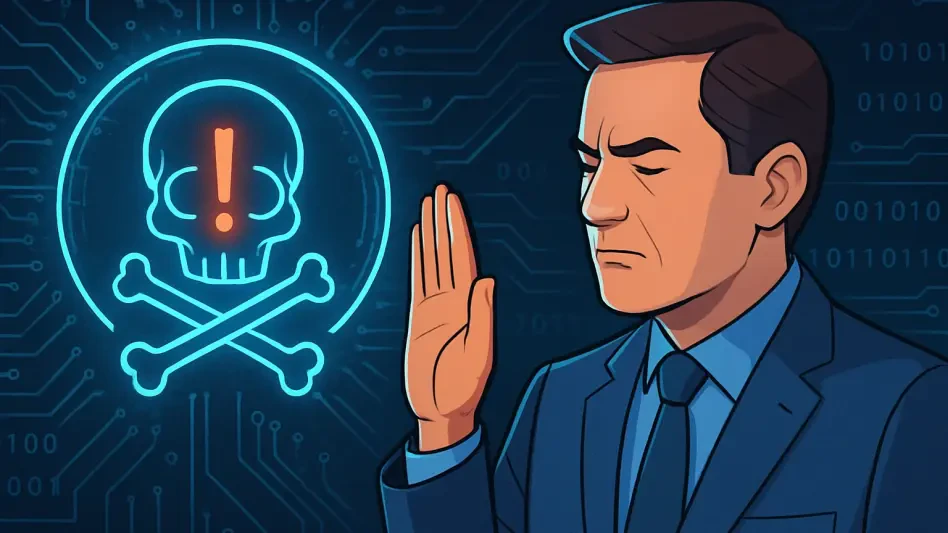In a world where a single keystroke can disrupt power grids or sway elections, the United States faces an invisible but relentless enemy in the form of cyberattacks from foreign powers. Imagine a scenario where critical infrastructure—hospitals, water systems, or even voting machines—grinds to a halt, orchestrated by unseen actors thousands of miles away, and you begin to grasp the gravity of this threat. This isn’t science fiction; it’s the reality of 2025, with threats like China’s alleged “Salt Typhoon” operation targeting U.S. telecommunications. Yet, while top cyber officials in the White House sound the alarm, President Donald Trump waves off these dangers with a shrug, calling them just part of the global game. How can a nation defend itself when its leader and advisors stand on opposite sides of such a critical battlefield?
The significance of this divide cannot be overstated. Cyber threats aren’t mere annoyances; they pose existential risks to national security, economic stability, and democratic integrity. With adversaries like Russia and China escalating their digital incursions, the mixed signals from the highest levels of U.S. leadership risk emboldening attackers and undermining deterrence efforts. This internal discord could shape not just policy, but the very safety of the nation in an era where digital warfare often outpaces traditional conflict.
A Disconnect in the Digital Age: Why Does It Matter?
The rift between Trump’s casual dismissal of cyber threats and the urgent warnings from his administration’s experts creates a dangerous gap in national defense. When the president downplays hacking as routine, it sends a message that the U.S. might not respond decisively, potentially inviting more aggressive attacks. This isn’t just a theoretical concern; studies from the Cybersecurity and Infrastructure Security Agency (CISA) indicate that cyberattacks on critical infrastructure have surged by over 60% in the last two years alone, highlighting the real-world stakes of this inconsistency.
Beyond immediate security risks, this disconnect erodes trust among allies who rely on a unified U.S. stance to counter shared digital threats. Nations like Japan and Australia, actively bolstering their cyber defenses, may question American commitment when leadership appears divided. The implications ripple outward, affecting international cooperation at a time when global cyber norms are still being shaped.
The Cyber Battlefield: Understanding the Stakes
The landscape of cyber warfare is more treacherous than ever, with state-sponsored actors pushing the boundaries of espionage and disruption. Campaigns like China’s alleged “Volt Typhoon,” aimed at infiltrating U.S. energy and water systems, demonstrate a shift from mere data theft to preparing for potential sabotage. Such operations could cripple essential services, causing chaos far beyond what traditional warfare might achieve.
Against this backdrop, the Trump administration’s conflicting approaches stand out starkly. While officials advocate for strong countermeasures, Trump’s remarks—often framing cyber intrusions as mutual and inevitable—create ambiguity. This lack of clarity could weaken the U.S. position in geopolitical negotiations, especially as adversaries interpret leniency as an opportunity to test boundaries further.
The broader impact on domestic safety is equally concerning. With cyber threats evolving to target everyday systems, from smart grids to healthcare networks, the absence of a cohesive strategy leaves vulnerabilities exposed. The nation stands at a crossroads where decisive leadership is essential to prevent digital attacks from translating into tangible harm.
Dissecting the Divide: Rhetoric vs. Reality
Trump’s public statements often paint cyberespionage as a two-way street, with comments like, “They hack in, that’s what they do. We’re good at it too.” This perspective normalizes such activities as standard international behavior, reducing the perceived urgency to act. It contrasts sharply with historical responses, where even subtle cyber incidents prompted strong diplomatic rebukes from past administrations.
On the other hand, senior officials like Alexei Bulezel from the National Security Council emphasize the catastrophic potential of unchecked cyber operations. Bulezel has publicly warned that foreign infiltration of critical systems could lead to widespread disruption, advocating for aggressive deterrence to signal that such actions carry consequences. This urgency underscores a belief that passivity invites escalation.
The resulting inconsistency muddies the waters for both enemies and allies. Adversaries may perceive a lack of resolve, while partners struggle to align with a policy that seems to shift depending on who speaks. This dynamic risks not only immediate security but also the long-term credibility of U.S. cyber strategy on the world stage.
Voices of Concern: Experts Weigh In
Cybersecurity specialists express deep unease over the mixed messaging emanating from Washington. Christopher Painter, a former cyber diplomat, argues that Trump’s dismissive tone undercuts efforts to establish deterrence, stating, “Consistency is everything. If we seem to tolerate these intrusions, we lose ground.” His perspective reflects a widely held view that strong, unified communication is vital to countering digital threats.
Other analysts offer a more measured take, acknowledging the complexity of the issue. James Siebens, a cybersecurity expert, suggests that Trump might pivot to a tougher stance if faced with a truly devastating attack, indicating that current rhetoric may not fully represent policy intent. This nuanced view highlights the unpredictability of leadership responses in crisis scenarios.
Globally, a trend of increasing openness about cyber operations adds another layer to the debate. Leaders like China’s Xi Jinping now reference cyber tactics casually, while nations such as Australia establish dedicated Cyber Commands. This shift toward transparency, while fostering dialogue, risks normalizing behaviors once considered unacceptable, making it harder to forge international agreements on cyber conduct.
Navigating the Threat: Steps Toward Unity
Addressing this internal divide demands concrete actions to align messaging and strategy. The administration must ensure that public statements from Trump reinforce the deterrence goals articulated by officials, eliminating ambiguity that adversaries could exploit. A unified front is essential to project strength and resolve in the face of escalating threats.
Prioritizing resources on disruptive cyberattacks over routine espionage offers another practical step. Experts agree that operations threatening infrastructure or public safety—like those aimed at power grids—pose immediate dangers and should take precedence. Allocating funding and expertise accordingly can mitigate the most severe risks while longer-term policies are developed.
Finally, the upcoming U.S. cyber strategy, expected to roll out within the next year, presents an opportunity to clarify national priorities. Using this framework to rebuild trust with allies and establish clear red lines for adversaries is critical. Engaging in global discussions to shape cyber norms, pushing for accountability rather than acceptance, will further strengthen the U.S. position in this digital era.
Reflecting on this critical moment, the stark contrast between Trump’s dismissal of cyber threats and the White House’s push for deterrence has underscored a pivotal challenge for national security. The tension reveals vulnerabilities not just in policy, but in the very perception of American resolve. Looking back, it becomes clear that bridging this divide is essential to safeguard infrastructure and democracy itself. Moving forward, the administration needs to harmonize its voice, prioritize the gravest threats, and lead international efforts to define acceptable cyber behavior. Only through such deliberate steps can the nation hope to fortify its defenses against an ever-evolving digital foe.








